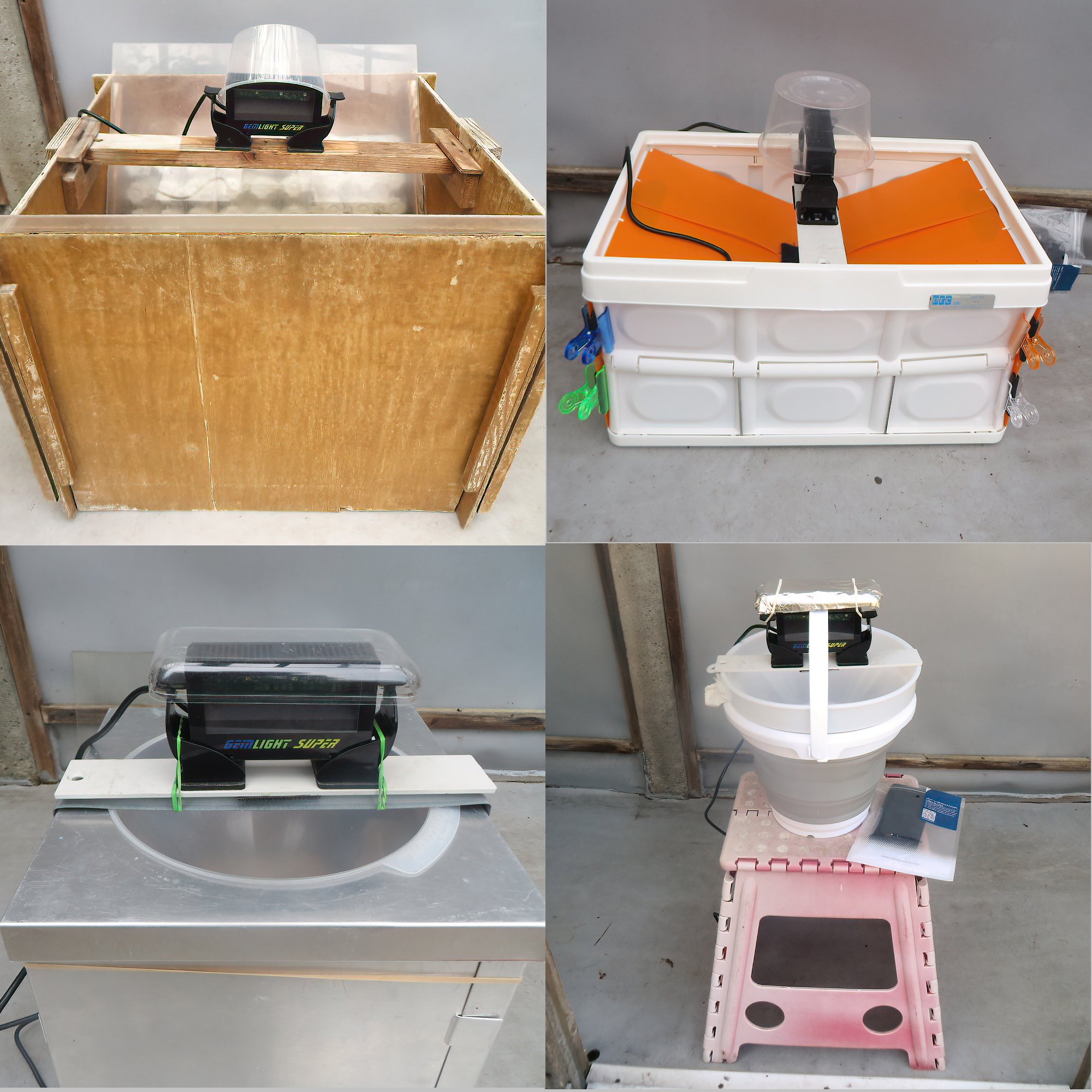
Following on from Part 1 and in preparation for our trip to Ireland I set out to try and reduce the footprint of my most successful solutions at home.
There was no point in taking or modifying my Skinner or Portable Heath trap as they have their own lights.
The two possible solutions, as pictured in the image above, utilized a collapsing box and a collapsing bucket.
Both attempts trapped moths but with each presenting their own problems and issues.
The collapsable box collapsed far too easily without its retaining lid which made retrieving any entering quarry rather difficult but is still useful for its original purpose.
The collapsable bucket needed a hole drilled in the bottom to allow any water out and still required a plastic funnel to work which made the trap itself too small internally and less practical when not required.
I decided to plumb for the bucket and Gemlight Super to take alongside my conventional Heath Trap to Ireland as with a suitable bung it might come in handy on the long journey by car to Holyhead.
The results in Ireland were to be as expected in that it attracted moths but considerably less than my standard Heath Trap but supplied one new record for us which was worth the effort of taking it.
It was only when we arrived back home that I came across a more practical solution which works better for us with this light - Buttercup Farm's Eco Moth Trap Without Light Inc. Rain Guard.
We took this solution as our only trap on a family holiday to Northumberland recently and again although the results were predictably low my issues for running the Gemlight Super were overcome.
The implementation of our solution will be the subject of our next blog article but first we need to consider the pros and cons of this light itself.
Yes, it does attract a small number of moths when used in the field and away from light pollution so offers potential based purely on its size and portability alone.
The fact that the unit is only showerproof makes its usage more restricted than I would like for a portable device to use out in the field.
Is it worth the high price? This is a question you will have to ask yourself. I have found pleasure in trying to make it work and to date have trapped two new records for our site in the process which offers some solace to me.
I do firmly believe that LED moths traps are the future.
To give people some idea of comparison we slotted the Gemlight Super within our normal trapping schedule on 22-06-2025 during a heatwave where the results speak for themselves.